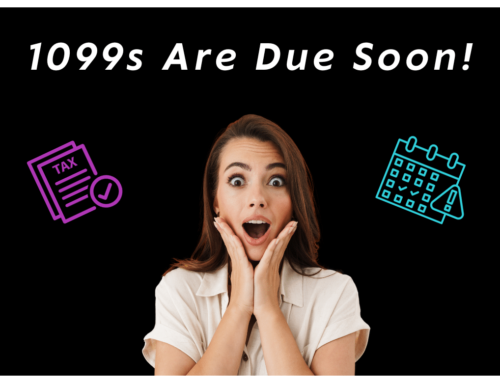Hi, I’m Bette Hochberger, CPA, CGMA. Today’s Tax Tip Tuesday is dedicated to helping freelancers understand their unique tax responsibilities.
In the ever-evolving digital age, more and more people are joining the gig economy, working part-time or full-time as freelancers. These ventures can range from writing and design work to ride-share driving and selling handmade crafts online.
The freedom and flexibility that come with freelancing can be amazing. However, navigating the tax obligations associated with freelancing can be tricky, so let’s talk about it.
Self-Employment Tax
As freelancers, you’re self-employed and must pay self-employment tax. This tax includes Social Security and Medicare taxes that an employee and employer would usually share. For 2023, the self-employment tax rate is 15.3%, which includes 12.4% for Social Security and 2.9% for Medicare.
Quarterly Estimated Taxes
Unlike traditional employees who have taxes withheld from each paycheck, freelancers must estimate their taxes and pay them on a quarterly basis. You should make estimated tax payments if you expect to owe $1,000 or more when you file your annual tax return.
The IRS provides Form 1040-ES for estimating these taxes, and payments are typically due in April, June, September, and January of the following year.
Deductible Business Expenses
The good news for freelancers is that you can subtract many business expenses from your taxes. This can really help lower the amount you owe. These expenses could include:
- Home office expenses: If you use part of your home regularly and exclusively for your work, you may be eligible to deduct a portion of your housing expenses, such as rent or mortgage interest, property taxes, and utilities.
- Supplies and equipment: Computers, software, office supplies, and other tools necessary for your work can be deducted.
- Professional development: Courses, books, and conferences that help enhance your skills in your field can also be deductible.
- Travel and meal costs: If you need to travel for work, you can deduct expenses like airfare, hotel costs, and 50% of your meal expenses during the travel.
Remember to keep meticulous records of these expenses, including receipts, so you can substantiate your deductions if ever questioned by the IRS.
Schedule C and Schedule SE
Freelancers typically report their income and expenses on Schedule C (Form 1040). You calculate net profit on Schedule C and then report it on Schedule SE to compute the self-employment tax.
Overall, navigating taxes as a freelancer can be stressful, but understanding these basics is a solid first step. Remember, tax situations can vary greatly, so consider consulting with a tax professional who can provide advice tailored to your specific circumstances.
Freelancing offers a unique blend of freedom and challenge. By mastering your tax obligations, you can focus more on what you love about your freelance work and less on tax stress.
Stay tuned for more Tax Tip Tuesday posts to make managing your finances a breeze.








